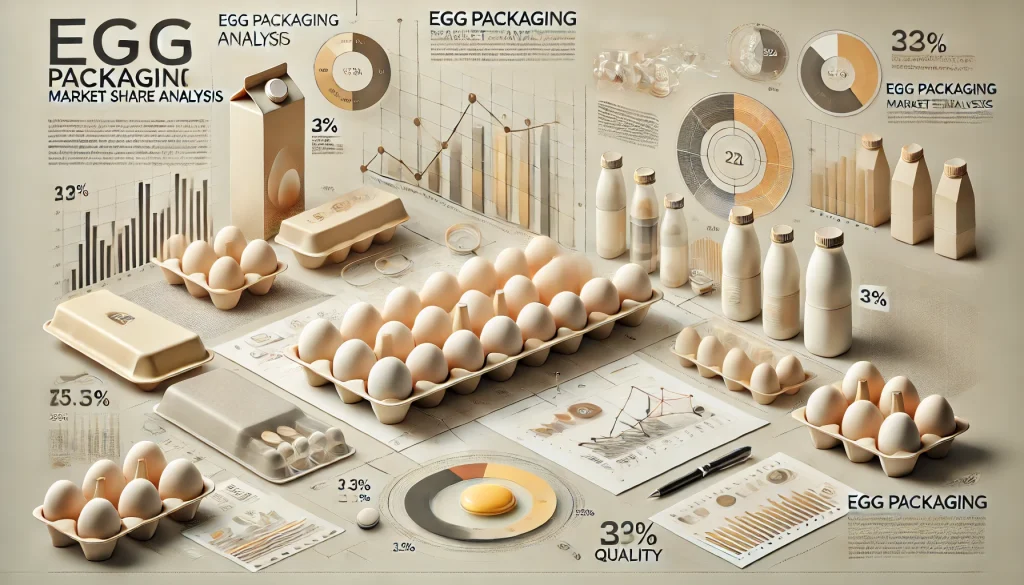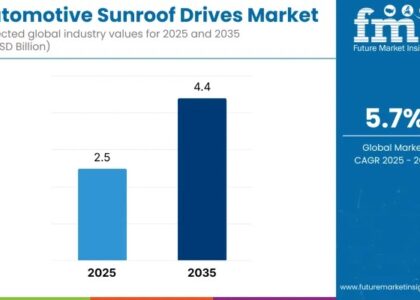
The global egg packaging market share analysis is witnessing a significant transformation driven by sustainability concerns and regulatory policies aimed at reducing plastic waste. As consumer awareness regarding environmental protection continues to rise, manufacturers are shifting towards eco-friendly packaging solutions. With a projected compound annual growth rate (CAGR) of 3.5%, the egg packaging sector is poised to reach USD 12.3 billion by 2035.
Egg packaging refers to protective materials and containers designed to store and transport eggs safely while minimizing breakage. The primary materials used in egg packaging include molded fiber, plastic, and polystyrene.
However, due to environmental concerns, biodegradable and recyclable materials are gaining traction in the market. The goal of egg packaging is not only to maintain product integrity but also to enhance shelf appeal and consumer convenience.
Explore Opportunities – Get Your Sample of Our Industry Overview Now!
https://www.futuremarketinsights.com/report-sample#5245502d47422d2e3230323934
The demand for egg packaging is fueled by multiple factors, including population growth, increasing egg consumption, and stringent food safety regulations. With eggs being a staple protein source worldwide, their demand is consistently high, necessitating effective packaging solutions. Additionally, the rise of e-commerce and online grocery shopping has led to an increased need for robust packaging that can withstand transportation stress.
Furthermore, urbanization and busy lifestyles are driving the demand for pre-packaged and labeled eggs, ensuring convenience for consumers. As supermarkets and hypermarkets expand their presence, the demand for attractive and sustainable packaging solutions continues to grow.
Key Market Trends Shaping the Egg Packaging Industry
- Sustainability and Eco-Friendly Materials
The global shift toward sustainability has had a profound impact on the egg packaging industry. Manufacturers are moving away from plastic-based packaging and adopting biodegradable alternatives like molded pulp and paper-based materials. The use of recycled paper and compostable materials is expected to gain momentum in the coming years. - Technological Advancements
The introduction of advanced packaging technologies such as smart labeling, QR codes, and RFID tracking is enhancing the traceability and authenticity of egg products. These innovations help consumers make informed choices while ensuring compliance with food safety regulations. - Lightweight and Cost-Effective Packaging
As packaging costs continue to be a concern, companies are focusing on lightweight materials that reduce transportation expenses while maintaining product safety. Sustainable molded fiber packaging offers both cost-effectiveness and environmental benefits.
Key Takeaways From the Egg Packaging Market Share Analysis
- The egg packaging market remains the most dominant, accounting for 40% of total market utilization.
- North America holds a substantial share, making up 30% of the market.
- Retail applications lead the market, generating 65% of overall revenue.
- The industrial sector, which focuses on bulk packaging for transport and storage, contributes 25% to the total market.
Driving Factors Fueling Market Expansion
Stringent Environmental Regulations: Governments worldwide are enforcing strict regulations on plastic waste, prompting manufacturers to explore sustainable alternatives. Incentives and tax benefits for eco-friendly packaging are further accelerating adoption.
Growth in the Poultry Industry: The rising global demand for eggs, coupled with an expanding poultry industry, is directly contributing to the need for efficient egg packaging solutions. Countries with high per capita egg consumption, such as China, the U.S., and India, are witnessing rapid market expansion.
Consumer Preference for Sustainable Products: Modern consumers are increasingly conscious of environmental impact and prefer brands that prioritize sustainability. Packaging that promotes recyclability and compostability is gaining significant traction in the market.
Competitive Landscape: Key Players in the Egg Packaging Market
The global egg packaging market share analysis is highly competitive, with several key players focusing on innovation and sustainability. Major companies operating in this space include:
- Huhtamaki Oyj – A leading provider of molded fiber egg packaging solutions, focusing on sustainability and innovation.
- Hartmann Packaging – Known for its eco-friendly and compostable egg cartons, catering to both large-scale and small-scale poultry businesses.
- Tekni-Plex – A significant player in the plastic egg packaging segment, emphasizing lightweight and durable solutions.
Egg Packaging Market Share Analysis Segmentation
By End-Use:
- Retail
- Industrial
- E-commerce
By Region:
- North America
- Asia-Pacific
About Future Market Insights (FMI)
Future Market Insights, Inc. (ESOMAR certified, recipient of the Stevie Award, and a member of the Greater New York Chamber of Commerce) offers profound insights into the driving factors that are boosting demand in the market. FMI stands as the leading global provider of market intelligence, advisory services, consulting, and events for the Packaging, Food and Beverage, Consumer Technology, Healthcare, Industrial, and Chemicals markets. With a vast team of over 400 analysts worldwide, FMI provides global, regional, and local expertise on diverse domains and industry trends across more than 110 countries.
Contact Us:
Future Market Insights Inc.
Christiana Corporate, 200 Continental Drive,
Suite 401, Newark, Delaware – 19713, USA
T: +1-347-918-3531
For Sales Enquiries: sales@futuremarketinsights.com
Website: https://www.futuremarketinsights.com
LinkedIn| Twitter| Blogs | YouTube




